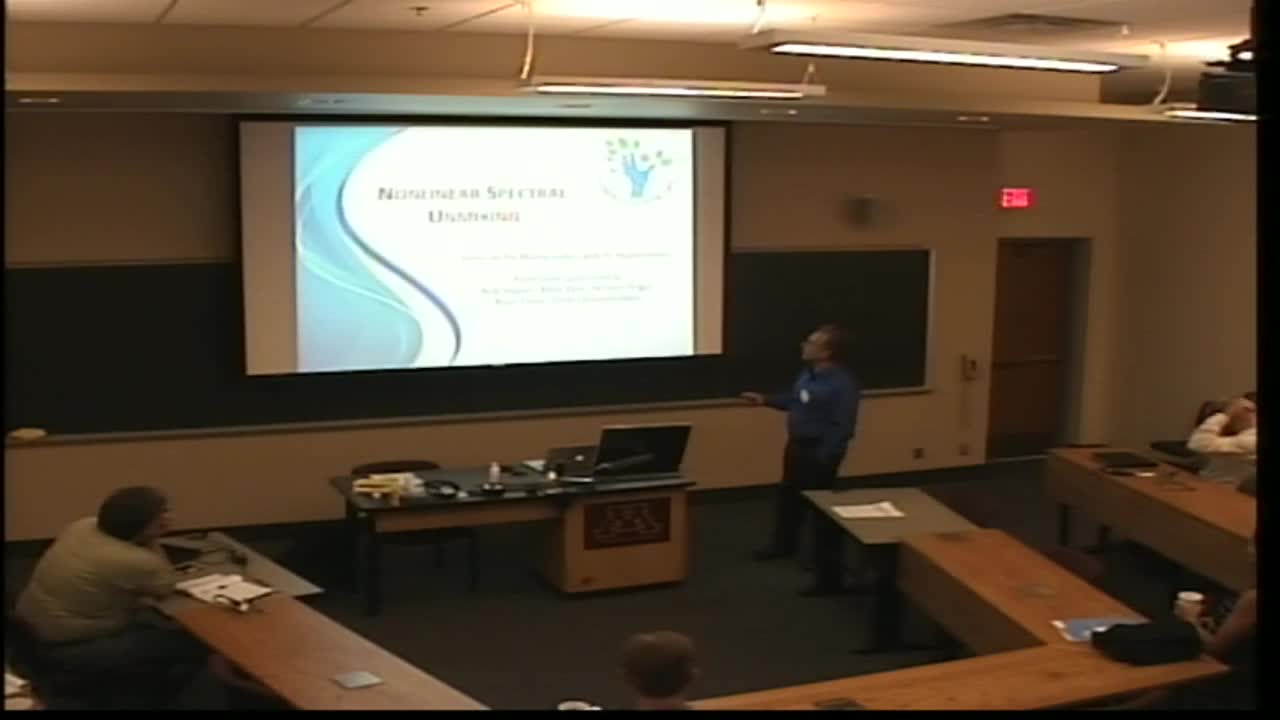Nonlinear Unmixing of Hyperspectral Imagery
Presenter
September 26, 2013
Keywords:
- Bilinear
MSC:
- 11E39
Abstract
Hyperspectral images provide the capability of identifying materials at a sub-pixel level by unmixing the spectra measured at each pixel. Many unmixing algorithms use a model of the mixing process. Unmixing is then approached as an inverse problem: find the spectra that were mixed according to the model to produce a given measurement, or set of measurements. Over the past decade, the prevalent mixing model investigated is the linear mixing model. Many unmixing techniques based on this model have been proposed. However, nonlinear spectral mixing effects can be a crucial component in many real-world scenarios, such as planetary remote sensing, mineral mapping, vegetation canopies or urban scenes. Several nonlinear mixing models were proposed decades ago, mostly in the applied remote sensing literature. They were applied mainly to small data sets, often in laboratory settings. It is only recently there has been a surge of interest in nonlinear unmixing in the signal processing community. Many in the latter community are not aware of much of the early work on nonlinear unmixing. This talk provides an historical overview of some nonlinear mixing models and associated unmixing algorithms. The main models covered are bilinear, intimate mixing, radiosity, and piecewise-convex models.
